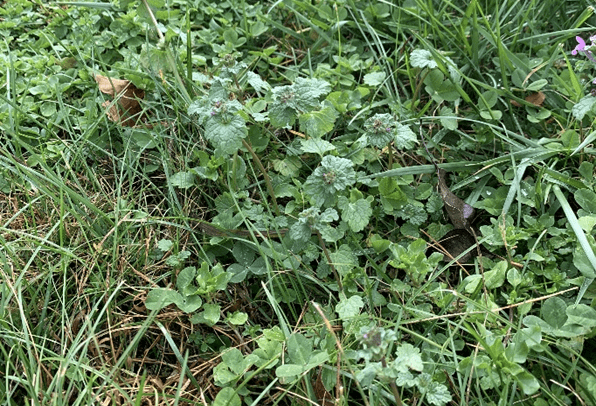Farming

During the winter, some producers may have concerns with timely weed control of several cool season species, primarily broadleaves. The available options for broadleaf weed control in grass forages are relatively simple and straightforward, but several factors play into the success of a weed-free winter and spring grazing.
Whether producers are managing permanent grazing pastures or hayfields, it is important to minimize cool-season weed competition to improve forage quality and optimize spring green-up for early harvests. Although cultural practices–like timely planting of annual forages, optimum seeding rates, and grazing management–may provide an advantage to cool-season forages over weed competition, the proper use of herbicides may arguably provide the most effective control for many winter weeds.
Timing of Herbicide Application Related to Weed Growth
Several common broadleaf weeds that emerge early on across much of the state include henbit, buttercup, chickweed, wild garlic, cutleaf geranium, dandelion, plantain, and thistle. Producers will find that many of these will be actively growing when soil temperatures range from 55°F to 70°F or when the average daytime air temperatures are between 60°F and 75°F. This is also the ideal time to consider herbicide applications – when weeds are small and actively growing.
Results from north Alabama field trials have indicated that herbicide applications made in both mid-November and mid-December have been highly effective on buttercup with low rates of 2,4-D, GrazonNext, or Weedmaster. These trials were conducted in permanent grazing pastures where grass forage was short (2 to 4 inches) and weeds were visible. If producers have pastures or hayfields that fit these similar criteria, chances are good that these fall/early winter applications will be effective. In areas where grass forage is taller or thicker, producers may want to delay application to allow weed emergence, especially if only using 2,4-D which has little to no soil residual. Spring applications are still effective, but compared to late fall, spring treatments usually require higher herbicide rates and field conditions are generally less ideal due to increased rainfall.
Timing of Herbicide Application Related to Cool-Season Forage Growth
Small grains, such as wheat or annual ryegrass, are common cool-season forages that are either drilled or broadcast in the fall, but plants must be large enough to tolerate certain herbicides. People generally think products like 2,4-D only have activity on broadleaf species, and rightfully so. This active ingredient is designed specifically for the broadleaf spectrum, but seedling forage grasses must be able to metabolize this product to avoid undue injury. Generally, annual forage grasses should be at least 4 inches tall or tillering before broadleaf herbicide is applied. Certain products are stricter on application timing which is why it is important to carefully read and follow all product labels. Duracor, for example, requires a 15-day plant back restriction to ryegrass after making a 12 fluid ounce per acre application. Once the ryegrass has emerged, plants must have three collared leaves before the same rate is applied.
Similar restrictions apply to newly seeded tall fescue. Most broadleaf herbicide labels will state that forages like tall fescue should be well established prior to application. While the term “well established” can be widely interpreted, labels will state that perennial grasses should “have a good secondary root system and show good vigor” prior to herbicide application. As a rule of thumb, applications should also be made when desirable forages are actively growing, and daytime air temperatures are above 60°F, for best activity. Avoid herbicide applications when desirable crops are stressed.
What about the clover?
Perennial white clover–like Ladino, Durana, or even the volunteer dutch clover–is almost always considered a desirable forage species in grazing pastures. If producers have competitive broadleaf weeds in these environments that are minimizing yield and forage quality, it is almost always recommended to forego clover for a season to get a handle on the weeds. Many of the previously-mentioned annual broadleaf weeds–like henbit, certain buttercups, chickweed, and geranium–may be controlled with early applications of 2,4-D. Established white clover has consistently tolerated up to 1.5 pints of 2,4-D (4 lb. formulation) per acre with the only indication of injury being a temporary bloom reduction. When applied from late fall through spring while weeds are in the early vegetative stage, this effective and affordable rate will successfully control many herbaceous broadleaf weeds while allowing established perennial clover to fully recover.
More Information
Producers should consult the Alabama Extension animal science and forages agent or specialist in their area if hey have specific questions regarding any aspect of weed or pasture management.
Trade and brand names used in this publication are given for information purposes only. No guarantee, endorsement, or discrimination among comparable products is intended or implied by the Alabama Cooperative Extension System.

